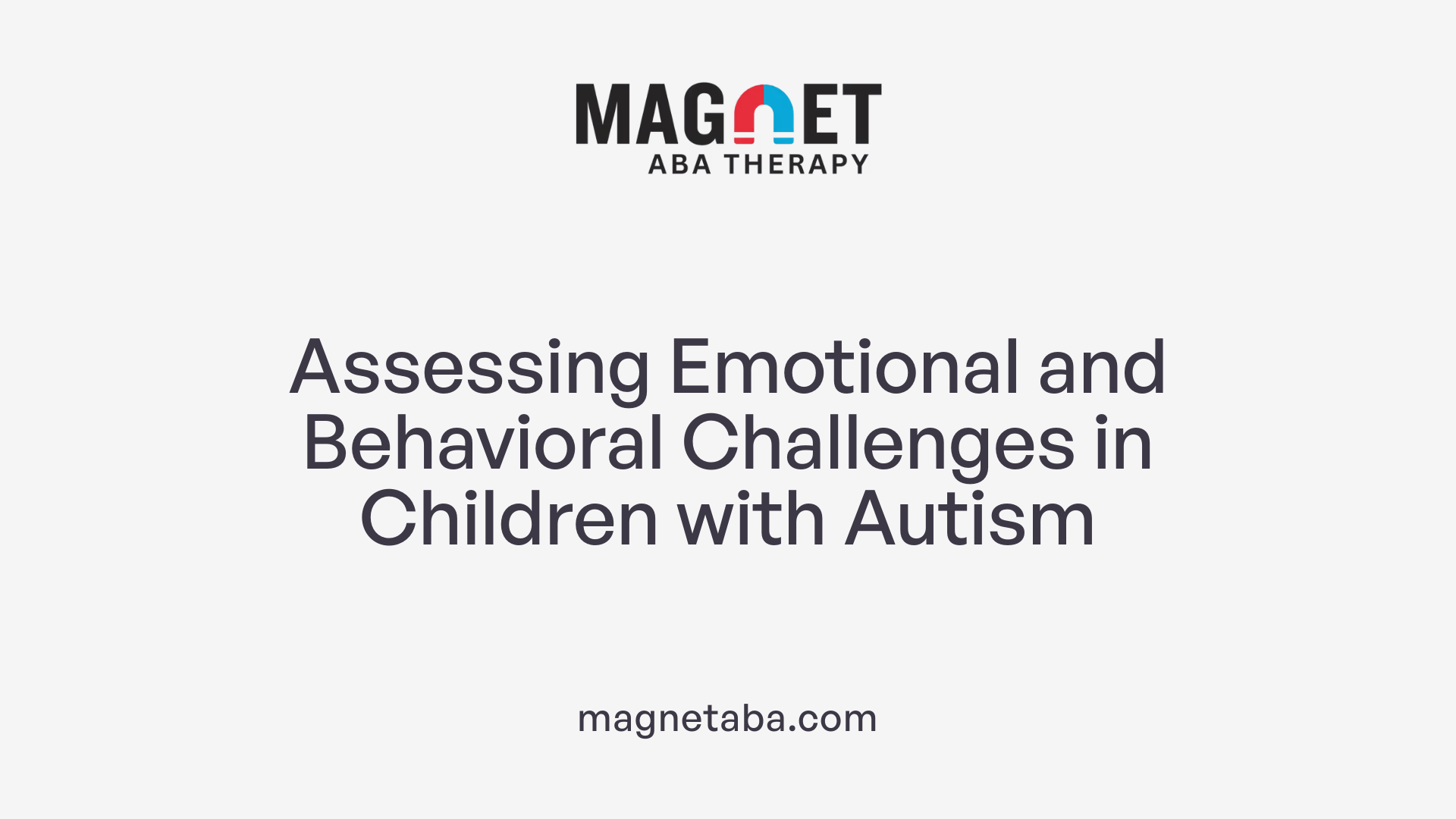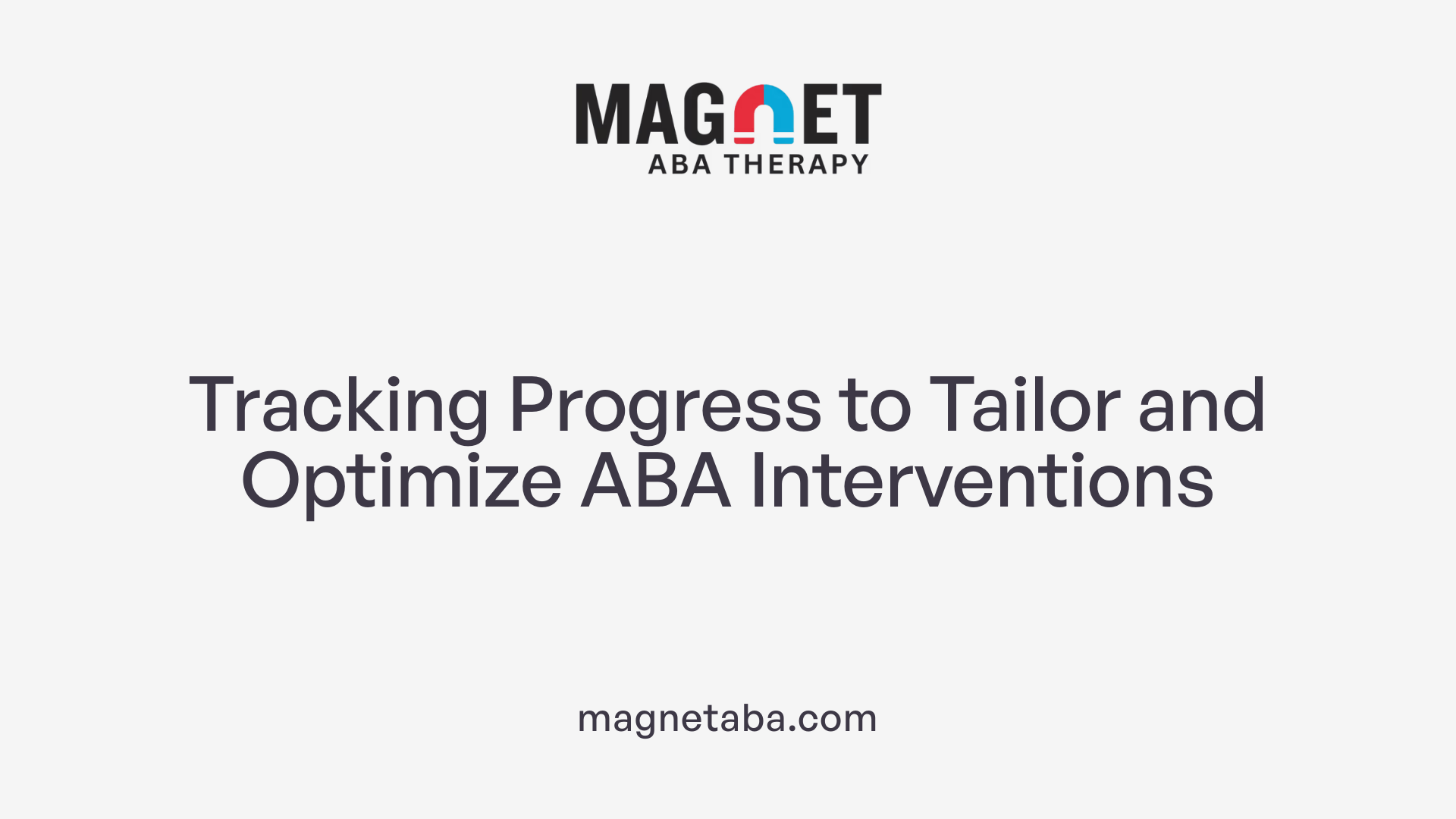Understanding ABA and Its Role in Autism Support
Applied Behavior Analysis (ABA) is a scientifically validated therapy focused on understanding and influencing behavior through learning principles. Widely recognized as a best practice in autism intervention, ABA is instrumental in teaching children coping strategies that help them regulate emotions, navigate daily challenges, and build resilience. This article delves into how ABA targets coping skills development with individualized, data-driven approaches that empower children with autism to thrive across various settings.
Foundations of ABA Therapy: Behaviorism and Positive Reinforcement
What is ABA therapy and its foundational principles?
Applied Behavior Analysis (ABA) therapy is a scientifically grounded approach based on behaviorism, which studies how behavior is influenced by the environment. ABA aims to understand why behaviors occur and how to promote helpful behaviors while reducing those that interfere with learning or daily functioning.
Central to ABA is the principle of positive reinforcement. This means when a desired behavior happens, it is immediately followed by a reward or motivating consequence, increasing the likelihood that the behavior will occur again. For example, a child might receive praise or a preferred item after completing a task, encouraging repetition of that behavior.
Another foundational concept in ABA involves analyzing antecedents and consequences—often called the A-B-Cs of behavior. Antecedents are what happen just before a behavior, while consequences are what follow it. Understanding these helps therapists figure out what triggers behaviors and what maintains them, allowing tailored interventions to encourage positive changes.
How are ABA programs tailored?
ABA therapy is personalized for each individual, designed and supervised by a Board-Certified Behavior Analyst (BCBA). The BCBA conducts thorough assessments considering the person’s unique skills, needs, interests, and family environment. Based on this, a customized program is created with specific goals and strategies to support development in areas like communication, social skills, and daily living.
This individualized approach ensures that the therapy fits the learner’s style and circumstances, increasing effectiveness. The program is regularly adjusted through ongoing data collection and assessment to reflect progress and changing needs. This dynamic process ensures that each person receives the most appropriate and supportive intervention possible.
Identifying and Assessing Coping Needs in Children with Autism

How are individual coping needs identified in ABA?
ABA therapy begins with detailed assessments, such as functional behavior evaluations (FBAs) and caregiver interviews. FBAs help uncover the triggers and functions of behaviors, while caregiver interviews provide valuable insights into the child's everyday experiences and challenges.
What common coping challenges do children with autism face?
Around 40% of children on the autism spectrum receive a clinical diagnosis of anxiety. This underscores the need to focus on emotional regulation, communication difficulties, sensory sensitivities, and managing daily living tasks.
How are coping strategies categorized in ABA?
Coping strategies in ABA are thoughtfully divided into five main categories:
- Sensory: Techniques addressing sensory sensitivities or seeking behaviors, helping children manage their sensory environment.
- Communication: Supporting effective expression and understanding, including alternative communication methods if needed.
- Emotional Regulation: Teaching skills to recognize, express, and manage emotions constructively.
- Cognitive: Approaches that help with problem-solving, attention, and coping with stress.
- Daily Living Skills: Practical supports for independence in routines, such as dressing or eating.
This structured approach ensures individualized treatment plans effectively target the specific areas where a child needs support, making ABA a comprehensive method for developing coping skills in children with autism.
Core ABA Techniques for Teaching Coping Skills

What are the primary ABA strategies to teach coping skills?
ABA therapy uses a collection of effective strategies specifically designed to help children with autism develop coping skills. These approaches focus on encouraging positive behaviors and providing clear structure.
Positive reinforcement is central to ABA, where desired coping behaviors are followed by rewards. This motivates children to repeat helpful responses when facing stress or anxiety.
Visual supports and schedules offer visual cues that structure the day, helping children understand what to expect and reducing anxiety. These tools break down routines into clear steps, making coping more manageable.
Modeling and role-playing are used to demonstrate coping skills in real-life scenarios. By watching and practicing these behaviors, children learn how to handle emotions and social situations effectively.
Behavior chaining combined with task analysis breaks down complex coping tasks into small, teachable steps. Each step is taught and reinforced until the entire sequence can be performed independently.
Together, these ABA strategies create a supportive framework enabling children to build resilience, manage emotions, and apply coping skills across various settings.
Structured Teaching Approaches and Naturalistic Methods in ABA

How does ABA use structured and naturalistic teaching methods?
ABA therapy combines both structured and naturalistic teaching approaches to effectively build new skills. One prominent structured method is Discrete Trial Training (DTT), where complex skills are broken down into small, manageable steps. These steps are taught during brief, focused teaching trials to provide clear, measurable learning targets. This structure helps children master foundational behaviors in a systematic way.
Alongside structured methods, ABA also emphasizes naturalistic teaching strategies, which rely on child-led play and everyday activities. These naturalistic approaches foster motivation and engagement by embedding learning opportunities into typical play and social interactions. This promotes the development of communication, social skills, and cognitive abilities in a relaxed, familiar context.
How are communication skills developed in ABA?
Communication development in ABA often involves functional communication training to support children in expressing their needs and feelings effectively. This includes teaching alternative communication methods, such as picture exchange systems and Augmentative and Alternative Communication (AAC) devices. These tools assist children who have limited verbal abilities by providing them with meaningful ways to communicate, thereby reducing frustration and promoting social interaction.
The integration of both structured and naturalistic techniques ensures that children build skills not only in controlled learning environments but also generalize these skills into their everyday lives, enhancing independence and social participation.
Developing Emotional Regulation and Behavior Management Strategies
What methods does ABA use to support emotional regulation?
ABA employs several effective techniques to help children regulate their emotions and manage behavior. Key methods include self-monitoring, where children learn to observe and recognize their emotional states and behavioral responses. Deep breathing exercises are taught as a calming strategy to reduce stress and emotional intensity in challenging situations. Positive self-talk is another important technique; children are guided to use encouraging and constructive inner dialogue, which fosters resilience and better coping with frustration or anxiety.
How does ABA address challenging behaviors?
Instead of relying on punishment, ABA focuses on reducing problematic behaviors by teaching and reinforcing alternative, positive behaviors. Using positive reinforcement, desirable behaviors are rewarded to encourage their recurrence. Functional Behavior Assessments (FBAs) help identify antecedents and consequences of problem behavior, enabling tailored interventions that modify environmental triggers and outcomes. This approach strengthens helpful skills and lessens behaviors that impede learning or social interactions.
More strategies for impulse and reaction management
ABA also helps children manage impulses and reactions by incorporating behavior chaining and role-playing activities that practice appropriate responses in various settings. Structured teaching methods and visual schedules support the development of self-regulation, allowing children to anticipate and handle transitions or stressful events more smoothly.
Emphasis on non-punitive, skill-building interventions
All behavior management in ABA prioritizes respectful, individualized approaches. Interventions are designed in collaboration with caregivers and educators to ensure consistency and generalization across environments. This respectful strategy promotes independence and emotional well-being without the drawbacks of punitive techniques, fostering long-term positive outcomes.
| Technique | Purpose | How It Supports Emotional Regulation |
|---|---|---|
| Self-monitoring | Awareness of emotions and behaviors | Helps children recognize triggers and manage responses |
| Deep breathing | Calming strategy | Reduces anxiety and physiological arousal |
| Positive self-talk | Encourages constructive internal dialogue | Builds confidence and coping capacity |
| Positive reinforcement | Increases helpful behaviors | Motivates change without punishment |
| Functional Behavior Assessment | Identifies causes of problem behavior | Enables targeted and effective interventions |
| Role-playing & behavior chaining | Practices appropriate reactions | Reinforces impulse control and social skills |
Through these combined strategies, ABA therapy supports emotional regulation and behavior management by empowering children with autism to understand, control, and improve their interactions and experiences.
Generalization and Collaboration: Extending Skills Beyond Therapy Sessions

How does ABA ensure coping skills generalize to real-life settings?
ABA therapy places a strong emphasis on ensuring that coping skills are not limited to the therapeutic setting but extend into daily life. This generalization is achieved by practicing targeted skills across various environments such as home, school, and community settings. Therapists and behavior analysts design interventions that include real-world scenarios, helping children apply what they learn in therapy to everyday challenges.
Practice of skills across different environments
To promote skill generalization, ABA programs intentionally incorporate activities and exercises in multiple contexts. Children practice coping strategies not only during clinic sessions but also during visits at home or within school. This diverse practice strengthens their ability to adapt skills to new and varied situations.
Involvement of caregivers, educators, and staff
Collaboration with caregivers, teachers, and other support staff is vital to maintaining continuity. Professionals train these key individuals on implementing strategies consistently, providing prompts, and reinforcing desired behaviors throughout the day.
Training families for consistency
Families receive guidance and training on how to reinforce coping skills effectively. This partnership ensures that children experience uniform expectations and supports, enhancing the likelihood that positive behaviors persist over time.
Ensuring skill maintenance and transfer
ABA therapists continually monitor progress through data collection and adjust programs as needed to foster maintenance. By involving a network of collaborators and emphasizing consistent practice, ABA maximizes the child’s ability to manage emotions, communicate needs, and navigate social situations in real-life settings.
Data-Driven Progress Monitoring and Program Adjustment

How is progress measured in ABA therapy?
ABA therapy employs rigorous data collection methods to monitor a child's progress closely. Practitioners use frequency counts to tally how often a behavior occurs, duration tracking to measure how long a behavior lasts, and rating scales to quantify behavioral intensity or skill mastery. This systematic data gathering during therapy sessions allows for an objective evaluation of changes in targeted behaviors and coping skills over time.
How are treatment plans adapted over time?
Treatment plans in ABA are dynamic and evolve based on ongoing assessment data. Behavior analysts and therapists regularly review collected information and make necessary adjustments to the goals and intervention strategies. This approach ensures that the therapy remains personalized and effective, accommodating the child's developing abilities and emerging needs.
How does evidence support ABA's effectiveness?
The efficacy of ABA therapy is well-supported by scientific research. Studies like the landmark 1987 Lovaas trial and recent research, such as a 2023 Wuhan clinical trial, demonstrate significant improvements in adaptive behaviors and coping skill development in children with autism. This evidence base informs data-driven decision-making in ABA treatment, reinforcing the importance of continuous progress monitoring and responsive program modification.
Evidence Supporting ABA’s Impact on Coping Skills in Autism
What research supports ABA's effectiveness in teaching coping skills?
Various rigorous research studies validate the effectiveness of Applied Behavior Analysis (ABA) therapy in enhancing coping skills for children on the autism spectrum. Notably, the seminal 1987 Lovaas study laid foundational evidence showing significant improvements in adaptive behaviors and language development after intensive ABA intervention. More recently, a 2023 trial conducted in Wuhan reaffirmed these findings, highlighting gains in emotional regulation, social functioning, and coping abilities following ABA therapy.
These studies collectively illustrate that ABA's structured, individualized approach leads to meaningful skill acquisition in areas critical for managing stress and daily challenges. By targeting specific coping domains—such as sensory processing, communication, and emotional regulation—ABA helps children develop resilience and practical strategies to handle anxiety and environmental demands.
How is ABA viewed by professional bodies?
ABA therapy enjoys strong recognition from authoritative health and psychological organizations. The American Psychological Association explicitly endorses ABA as an evidence-based best practice for autism intervention. Likewise, the US Surgeon General acknowledges ABA's scientifically validated status and advocates for its use as a first-line treatment.
This broad professional endorsement underscores the therapy’s credibility and supports its widespread implementation across clinical and educational settings. These organizations emphasize that ABA’s positive outcomes—especially when delivered intensively over extended periods—translate into improved intellectual functioning, communication, social skills, and daily living competencies for individuals with autism.
Family Involvement and Navigating ABA Services
Why is family involvement critical in ABA for coping skills?
Family involvement is essential in Applied Behavior Analysis (ABA) therapy because families are the primary support system for children. They help reinforce coping strategies learned during therapy sessions and facilitate the generalization of these skills in everyday environments, such as home and community settings. Consistent communication and collaboration between families and ABA professionals ensure that treatment goals are effectively integrated into the child's daily routine, increasing the likelihood of successful outcomes.
How can families access quality ABA services?
To access quality ABA services, families should begin by consulting with medical providers to discuss the suitability of ABA therapy for their child’s needs. It is also important to verify whether insurance covers ABA treatment, as coverage varies by state and plan. Families can find qualified providers by using directories that list certified professionals, such as board-certified behavior analysts (BCBAs) and registered behavior technicians (RBTs). Asking relevant questions about the provider’s experience, therapy approaches, and family involvement policies helps ensure a good match.
Emphasizing strengths-based and respectful approaches
Modern ABA therapy emphasizes respect for neurodiversity by focusing on strengths-based approaches rather than seeking to change a child’s inherent identity. Therapy goals are tailored to the individual child's interests and needs, promoting independence, communication, and emotional regulation in a supportive environment. Family collaboration is pivotal in maintaining this respectful and effective practice.
Together, families and ABA professionals form a partnership that supports children’s growth, resilience, and coping skills, fostering meaningful improvements across all settings.
Empowering Children Through ABA-Driven Coping Skills
Applied Behavior Analysis stands as a cornerstone approach to helping children with autism develop essential coping strategies. Its individualized, evidence-based methods emphasize positive reinforcement, structured teaching, and comprehensive collaboration between professionals and families. With ongoing monitoring and a commitment to generalizing skills beyond therapy, ABA fosters emotional regulation, communication, and independence. As research continues to affirm its efficacy, ABA remains a vital tool in empowering children on the autism spectrum to navigate their world with greater confidence and resilience.












